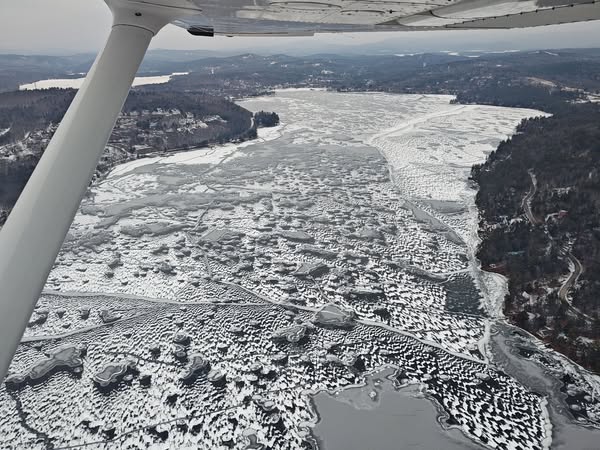We’re finally having a real New Hampshire winter in terms of temperature, if not snowfall, as shown by the Jan. 14 unofficial but well-respected declaration of “ice-in” on Lake Winnipesaukee (meaning the five main ports of the lake are all iced in).
Aside from what this means for pond hockey, does it matter? Indeed it does, says the Lake Winnipesaukee Alliance. I’ve copied this explanation from their Facebook page:
When Lake Winnipesaukee fully freezes, it’s more than just a winter wonderland—it’s a vital reset for the ecosystem. Consistent ice formation stabilizes water temperatures, protects aquatic life, and helps minimize early season cyanobacteria blooms by blocking sunlight from reaching the water.
For cold-water fish like lake trout and landlocked salmon, ice-in is critical for maintaining the stable conditions they need to thrive. These species depend on oxygen-rich water, and without ice, warmer temperatures and increased algal activity can disrupt the lake’s balance, potentially depleting oxygen and putting these fish at risk. As winters warm and ice-in becomes less predictable, the lake’s delicate balance faces new challenges. By working to protect water quality and reduce pollution, we can help ensure these natural processes—and the species that rely on them—are preserved for generations to come.


 Return to the Concord Monitor
Return to the Concord Monitor
Oh for Pete’s sake! So they say the lake needs ice. It needs to be cold, and then they say people can help this by…not polluting the lake.
Warming waters is not a pollution problem. What people can do to help is reduce their carbon footprints. There should be solar panels and electric cars at every house of people who love that lake.
yeah I noticed that glaring misconception too!